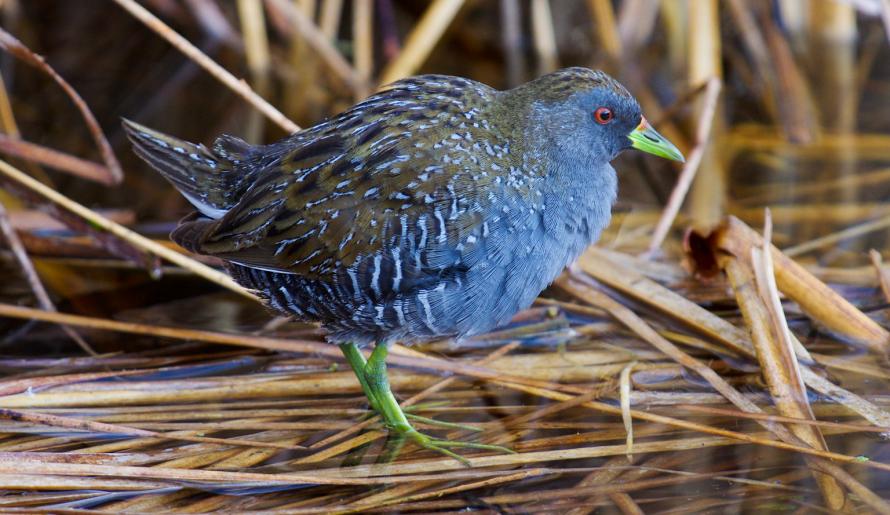
Australian Spotted Crake
Porzana fluminea
| Details | |
|---|---|
| Type | Bird |
| Group | |
| Other Common Names | Australian Crake |
| Biology | Breeding season: August to January, but late April recorded. They nest in swamps or lakes in a variety of vegetation types, such as rushes, grass, low shrubs and water-lilies. They may also nest on overhanging tree branches or on the ground. Some nests have a stage or track leading to them. Nests can vary from a flat, flimsy structure to a cup of fine, woven material, sometimes with a dome or with rushes interlaced over the nest. Nests are made of rushes or grass and lined with soft grass. |
| Distinctive Markings | Upperparts, back of its neck and crown of its head are brownish-olive, streaked black and finely spotted with white. |
The Australian Spotted Crake was first scientifically described by John Gould in 1843. The first part of its Latin name, Porzana, is a local (Venetian) name for the smaller crakes. Fluminea just means 'frequenting rivers'.
| Interesting Facts | |
|---|---|
| Diet | Omnivore. Feeds on seeds, molluscs, insects, crustaceans and spiders. They forage on mudflats, and in reed beds. |
| Habitat | Found in well-vegetated edges of wetlands, whether permanent or temporary, fresh or saltwater. It is usually found among dense growths of plants such as saltbush, reeds, rushes, mangroves, thick grass, or dense shrubs such as Bottle-brush or Tea-tree. |
| Native Status | Native to Australia |